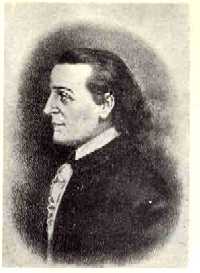 Born in Coventry, Connecticut on October 4, 1765 and orphaned at an early age, Samuel Huntington was adopted by his famous uncle for whom he was named. Due to bearing the same name as his uncle, (who was a signer of the Declaration of Independence, a prominent lawyer and business man, and for 10 years Governor of Connecticut), they have often been confused one for the other.
Born in Coventry, Connecticut on October 4, 1765 and orphaned at an early age, Samuel Huntington was adopted by his famous uncle for whom he was named. Due to bearing the same name as his uncle, (who was a signer of the Declaration of Independence, a prominent lawyer and business man, and for 10 years Governor of Connecticut), they have often been confused one for the other.
After three years at Dartmouth College, he transferred to Yale University, graduating in 1785. Upon becoming Governor in 1786, the older Samuel appointed his nephew as one of his military aides and an assistant to the Adjutant General. He studied law in his uncle’s office at Norwich and was admitted to the bar in 1793.
On June 3, 1795, Samuel appeared at a meeting of Wooster Lodge at Colchester, Connecticut. His reputation and character being well known and above reproach, the by-laws were suspended and a ballot taken. The ballot was clear, and Samuel Huntington was forthwith initiated an Entered Apprentice. The following day, at a special communication of Wooster Lodge, he was passed to the degree of Fellowcraft and raised a Master Mason.
This unusual chain of events becomes clearer, when it is pointed out that just four days later, he was elected Secretary of the newly chartered Somerset Lodge at Norwich, Connecticut. In May of 1796, he represented Somerset Lodge at the Annual Communication of the Grand Lodge of Connecticut, carrying the Junior Warden’s proxy.
He became interested in the opportunities the Western Reserve Territory afforded, and visited Ohio in the summer of 1800. The following year he brought his family, consisting of his wife, (the former Hannah Huntington, a distant cousin), whom he married in 1791, two sons and Miss Margaret Cobb, a governess and their personal belongings to Ohio. Traveling by covered wagon he settled initially near Youngstown and soon thereafter in the village of Cleveland.
His law practice and real estate transactions soon established him as a man with a future. In 1802, he was a member of the state constitutional Convention, later elected to the state Senate and chosen the first speaker of the General Assembly, as well as, Chief Justice of the State. He was later elected Governor, serving from 1808-1810.
In 1808 he moved his Masonic membership to Erie Lodge No. 47, (now Old Erie No.3) later affiliating with Scioto Lodge No.2 (now Scioto No.6) on January 4,1809.
On January 5, 1809 the fourth day of the first Annual Communication of the Grand Lodge of Ohio Samuel Huntington was elected and installed M. W. Grand Master, thus serving simultaneously as Governor of the State of Ohio and Grand Master.
During the war of 1812, he was commissioned a Colonel of the United States Army, serving also as Paymaster for the Army in the northwest. Brother Huntington died June 9, 1817, of injuries received while supervising the repairs on the road from his estate to Fairport Harbor.
Having served Masonry and his country with distinction, he was buried with Masonic ceremonies by Meridian Orb Lodge No. 10 (now extinct) of Painesville on June 9, 1917. His body was interred in the Evergreen Cemetery, Division 3, Lot 50 & 51, Painesville, Ohio.